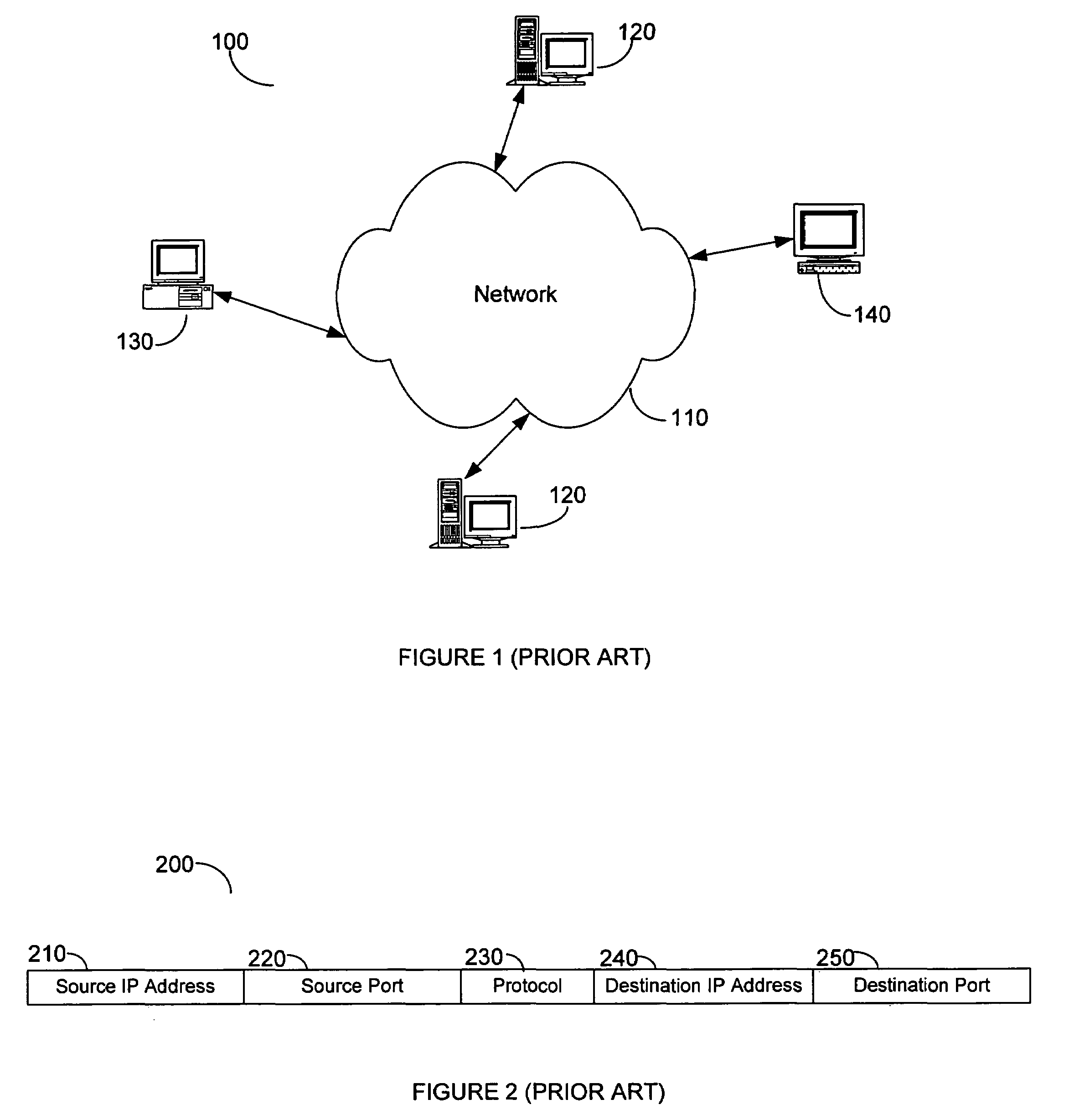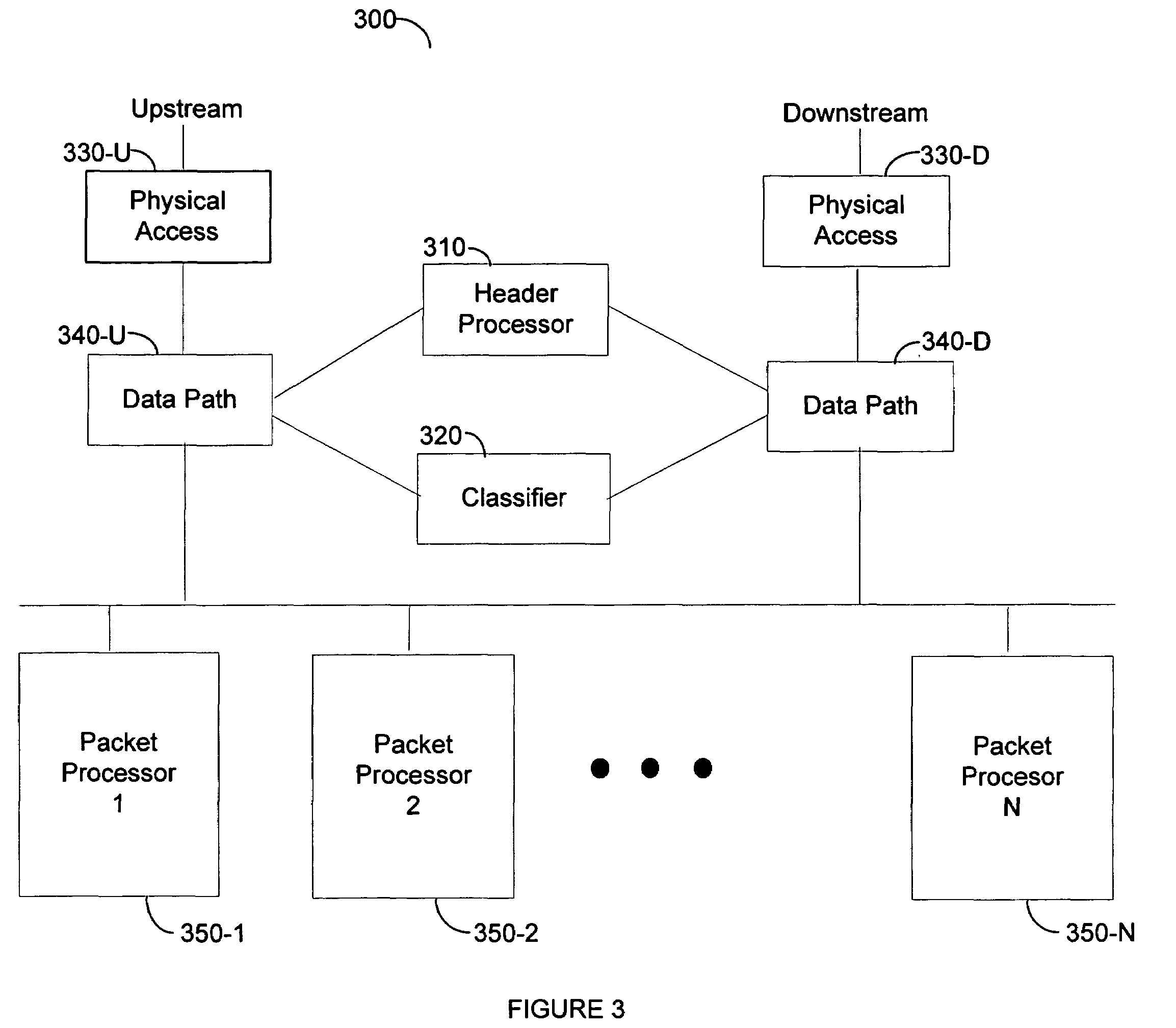Method and apparatus for wire-speed application layer classification of upstream and downstream data packets
a data packet and wire-speed application technology, applied in the field of packet classification, can solve the problems of impracticality of approach, large address space, and huge memory requirements, and achieve the effect of efficient data processing
- Summary
- Abstract
- Description
- Claims
- Application Information
AI Technical Summary
Benefits of technology
Problems solved by technology
Method used
Image
Examples
Embodiment Construction
[0002]A. Field of the Invention
[0003]The present invention relates generally to the classification of packets in a full duplex communication system, and more specifically to high speed digital communication networks transporting packets which may be monitored at the application level of the communication model where wire speed handling of the packet is required. The present invention is embodied in a network system, a data classifier, a method for hashing and computer program products for enabling a computer to perform data packet classification.
[0004]B. Background of the Invention
[0005]In most communication networks used for exchanging messages between a source and a destination, a message in a digital form is divided into multiple packets for faster and more convenient transmission and for reducing errors. Examples of such communication networks are the Internet, Wide and Local Area Networks. The digital packets are then transmitted over the network between a source computer and a...
PUM
 Login to View More
Login to View More Abstract
Description
Claims
Application Information
 Login to View More
Login to View More - R&D
- Intellectual Property
- Life Sciences
- Materials
- Tech Scout
- Unparalleled Data Quality
- Higher Quality Content
- 60% Fewer Hallucinations
Browse by: Latest US Patents, China's latest patents, Technical Efficacy Thesaurus, Application Domain, Technology Topic, Popular Technical Reports.
© 2025 PatSnap. All rights reserved.Legal|Privacy policy|Modern Slavery Act Transparency Statement|Sitemap|About US| Contact US: help@patsnap.com



